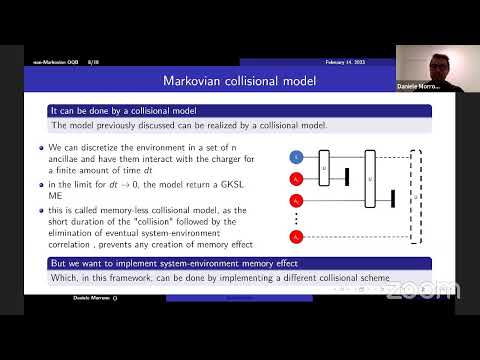Description:
Save Big on Coursera Plus. 7,000+ courses at $160 off. Limited Time Only!
Grab it
Explore the effects of non-Markovianity on charging open-system quantum batteries in this 43-minute lecture. Delve into a collisional model framework, examining how memory effects in the environment impact the dynamics of quantum batteries. Investigate the steady-state ergotropy behavior and the intricate relationship between information backflow and other dynamic parameters. Discover the maximum achievable ergotropy value and learn how non-Markovian environments enable near-maximum ergotropy generation across a broader parameter space. Analyze the role of non-Markovianity through measure evaluations for different subsystems, uncovering the connection between maximum ergotropy and minimal non-Markovianity in the battery subsystem. Gain insights into open quantum battery research, collision models, and measuring techniques for various system components.

Charging a Quantum Battery in a Non-Markovian Environment: A Collisional Model Approach
Add to list